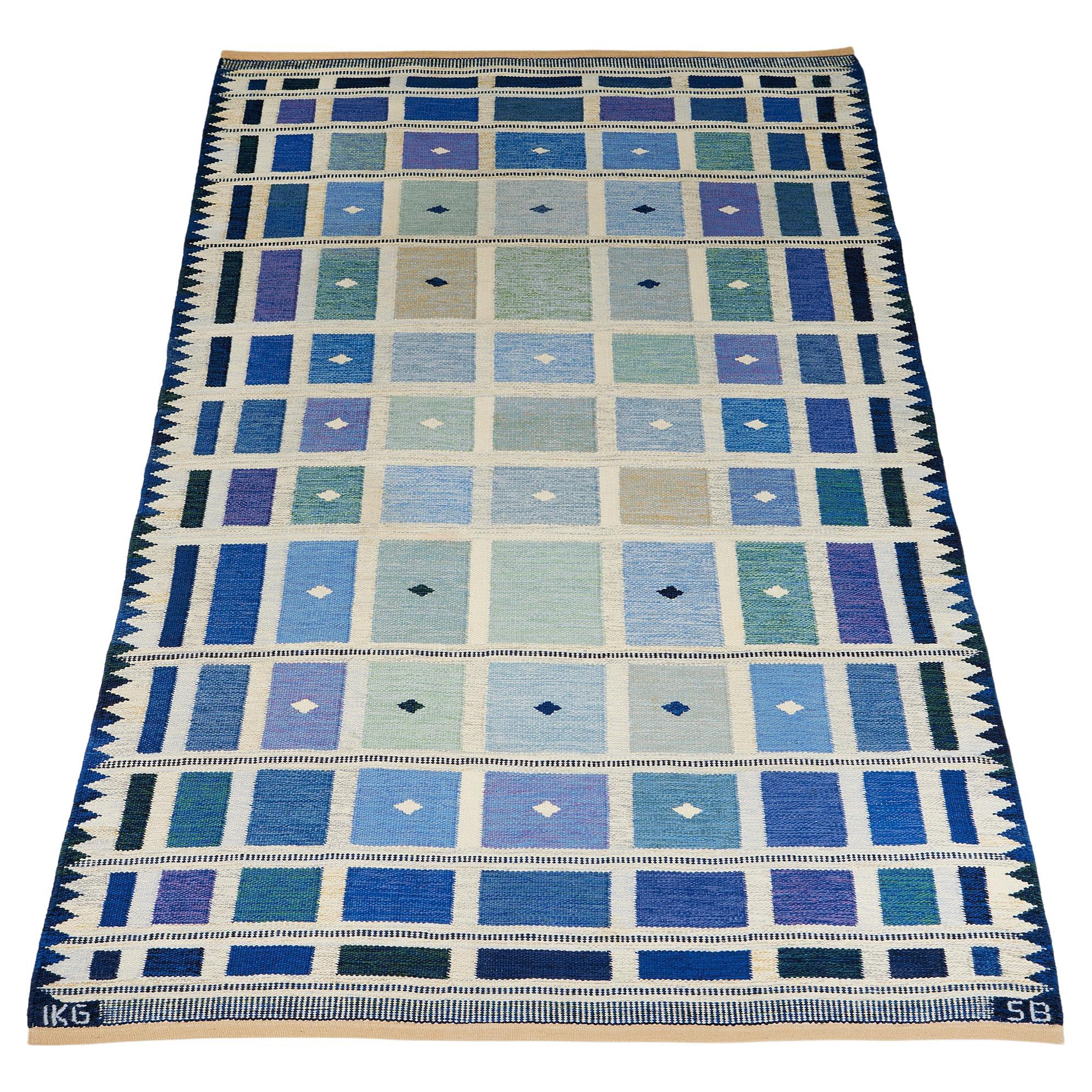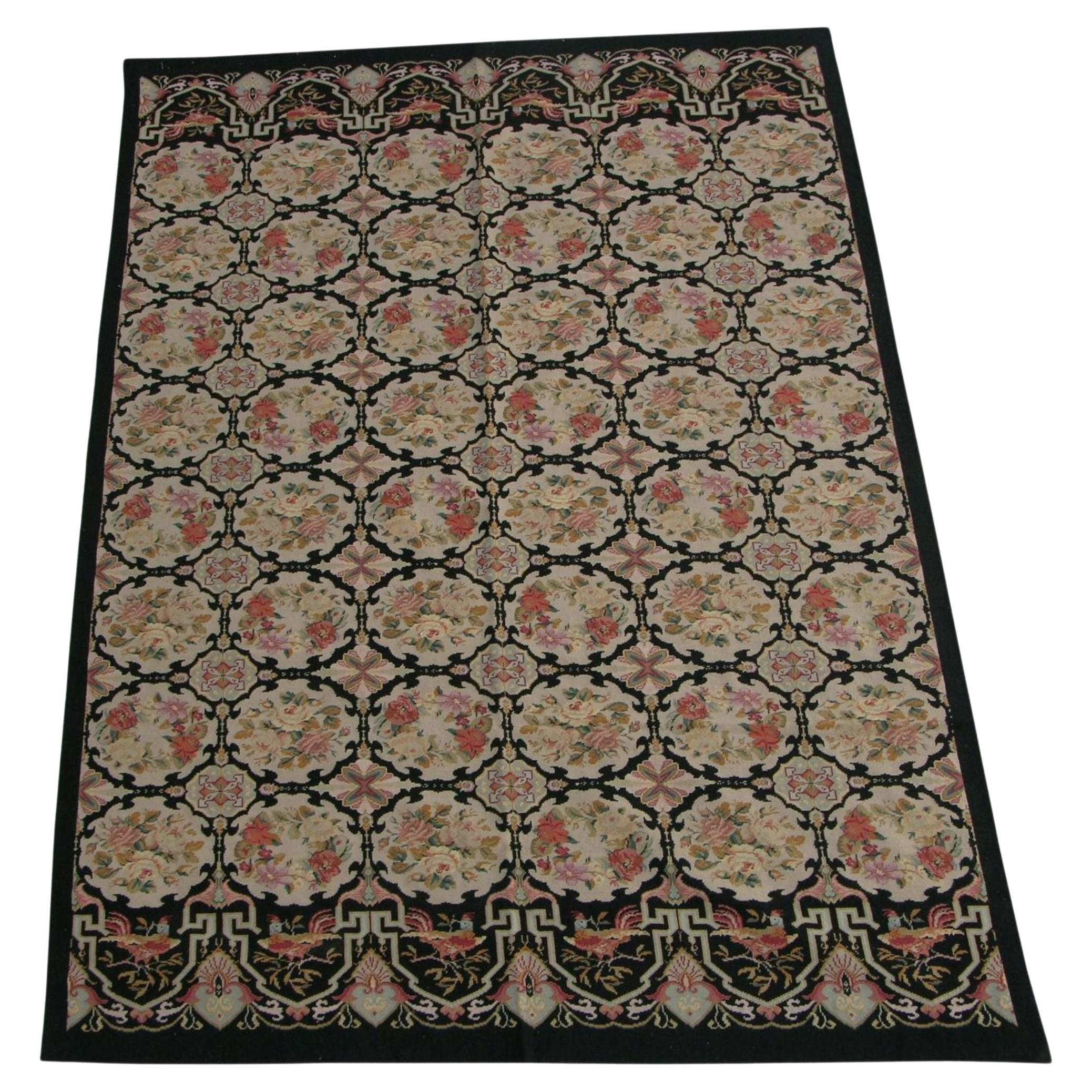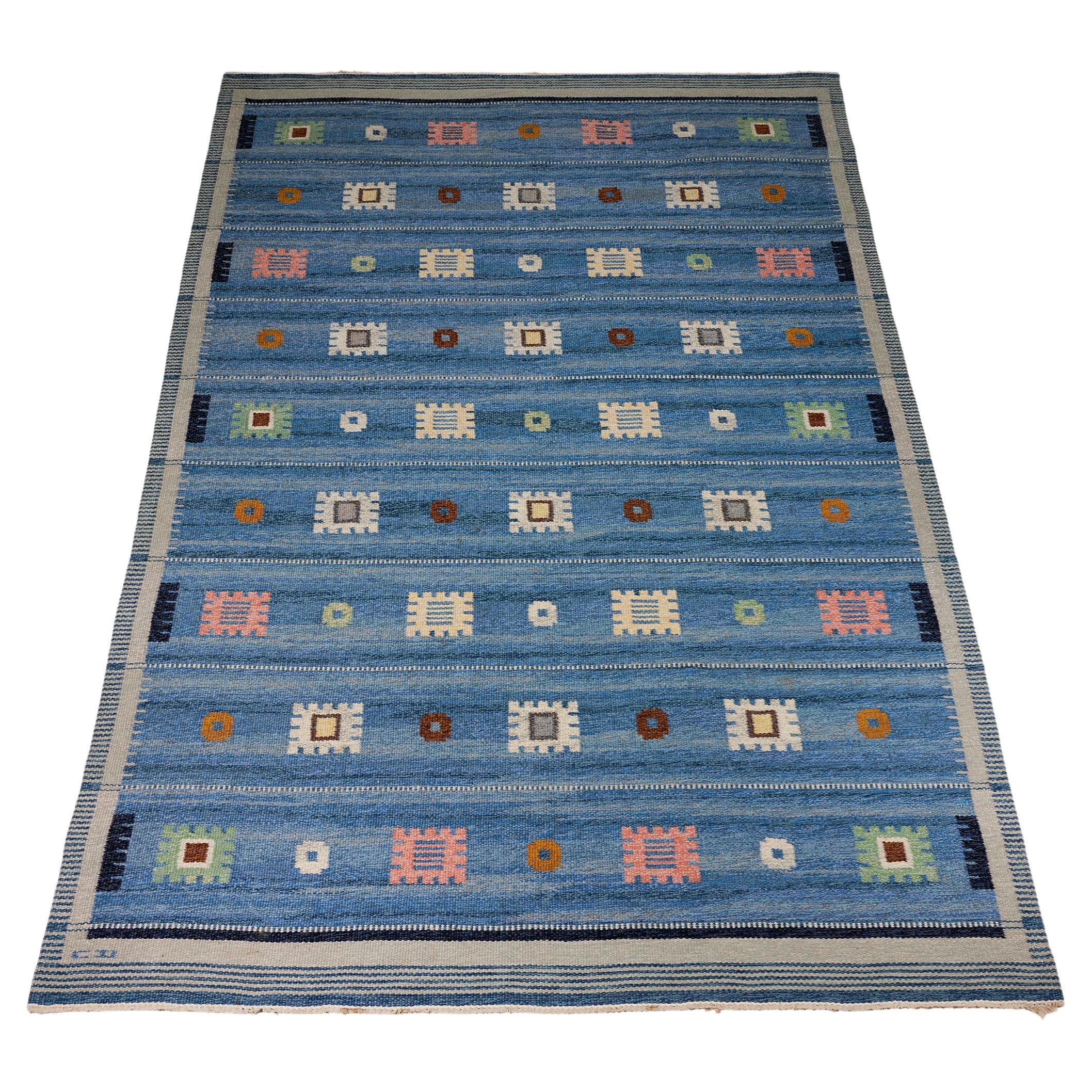Items Similar to Rug 'Höst' designed by Kirsten and John Becker, Denmark, 1950s
Want more images or videos?
Request additional images or videos from the seller
1 of 5
Rug 'Höst' designed by Kirsten and John Becker, Denmark, 1950s
About the Item
Rug 'Höst' designed by Kirsten and John Becker, Denmark, 1950s
Signed.
Wool.
L: 415.5 cm
W: 228 cm
- Dimensions:Width: 89.77 in (228 cm)Length: 163.59 in (415.5 cm)
- Style:Mid-Century Modern (Of the Period)
- Materials and Techniques:
- Place of Origin:
- Period:
- Date of Manufacture:1950s
- Condition:
- Seller Location:Stockholm, SE
- Reference Number:1stDibs: LU1006635657982
About the Seller
5.0
Recognized Seller
These prestigious sellers are industry leaders and represent the highest echelon for item quality and design.
Gold Seller
These expertly vetted sellers are highly rated and consistently exceed customer expectations.
Established in 1998
1stDibs seller since 2013
184 sales on 1stDibs
Typical response time: 1 hour
- ShippingRetrieving quote...Ships From: Stockholm, Sweden
- Return PolicyA return for this item may be initiated within 2 days of delivery.
More From This SellerView All
- Rug Designed by Sigvard Bernadotte, Sweden, 1950sBy Sigvard BernadotteLocated in Stockholm, SERug designed by Sigvard Bernadotte, Sweden. 1950s. Wool. Rölakan technique. This eye-catching rug was designed by Sigvard Bernadotte in Sweden during the 1950s. The textile was woven into a pattern comprised of geometric squares in various shades of blue that are divided by a white grid pattern. This contrast further accentuates the different tones of blue in the rug. The weaver produced the rug using the flat weave method. This is traditionally known as the rölakan technique which has been used since in Sweden since the eighteenth century Sigvard Bernadotte was a Swedish Prince with a real passion for design. He turned his hand to several design practices including silver objects and kitchen items...Category
Mid-20th Century Swedish Mid-Century Modern Russian and Scandinavian Rugs
MaterialsWool
- Rug Designed by Ingegerd Silow, Sweden, 1950sBy Ingegerd SilowLocated in Stockholm, SERug designed by Ingegerd Silow, Sweden, 1950s. Signed. Wool. Measurements: L: 253 cm / 8' 3 1/2'' W: 168 cm / 5' 6 1/2''Category
Mid-20th Century Swedish Mid-Century Modern Russian and Scandinavian Rugs
MaterialsWool
- Rug, Designed by Antonin Kybal, Czech Republic, 1950sLocated in Stockholm, SERug, designed by Antonin Kybal, Czech republic. 1950's. Kelim technique. Hand-woven wool. Measurements: H: 393 cm/ 12' 10 23/32" W: 280 cm/ 110 7/32"Category
Vintage 1950s Swedish Scandinavian Modern Russian and Scandinavian Rugs
MaterialsWool
- Rug designed by Anna-Greta Sjöqvist, Sweden, 1950s.By Anna-Greta SjöqvistLocated in Stockholm, SERug designed by Anna-Greta Sjöqvist, Sweden. 1950s. Pure wool. Kelim technique. Measurements: L: 244 cm/ 8'' W: 180 cm/ 5' 11''Category
Vintage 1950s Swedish Scandinavian Modern Russian and Scandinavian Rugs
MaterialsWool
- Rug Designed by Carl Dangel, Rölakan Flatweave Technique, Sweden, 1950sBy Carl DangelLocated in Stockholm, SERug designed by Carl Dangel, Sweden, 1950s. Handwoven wool carpet in Rölakan flatweave technique. Signed. Dimensions: L: 304 cm / 9’ 11 3/4’’ W: 197 cm / 6’ 5 1/2’’Category
Vintage 1950s Mid-Century Modern Russian and Scandinavian Rugs
MaterialsWool
- Rug, Anonymous, Sweden, 1950sLocated in Stockholm, SERug, anonymous, Sweden, 1950s. Wool. Rölakan technique. Measures: L: 340 cm / 11' 3/20'' W: 254 cm / 8' 3/10''.Category
Mid-20th Century Swedish Mid-Century Modern Russian and Scandinavian Rugs
MaterialsWool
You May Also Like
- 1950s Vintage Floral Design Needlepoint RugLocated in Los Angeles, USAncient Roots Of Needlepoint Rugs Archaeologists and scholars consider the roots of needlepoint to have been around 1500 BC. They consider the first needlepoint to include the fine diagonal stitches that were used to sew tents together by the ancient Egyptians. The art eventually evolved into tapestry weaving. However, a tapestry weaving differs significantly from needlepoint in that it uses a loom and vertical warp. Tapestry weaving is closer to the weaving of kilims and pile rugs than canvas work. However, some still include tapestry weaving in the category of needlepoint because of the fine work that appeared during the late Renaissance. It can have a similar appearance to the untrained eye. Technically, tapestry weaving and needlepoint are not the same, and they do not use the same technique. The first actual needlepoint rugs and needle-points began to appear in the late Renaissance. Needlepoint is worked by creating stitches on a stiff canvas. The canvas is typically made from jute or linen and is quite durable. Pieces from the Renaissance were used to cover footstools, chairs, pillows, bed headboards, and other furnishings. They were also used as table coverings and wall coverings. You could also find them on many small items such as purses, shoes, and various adornments for clothing. During the Renaissance, the craft reached a high level of skill, and the designs became incredibly detailed and realistic. They mimicked many of the subjects and styles of famous paintings of the time. They created florals, still life designs, scenes, and geometric tiled pieces. Some of them mimicked the designs found in Persian Carpets. Needlepoint reached its peak popularity in the 19th century when it was considered a proper occupation for a lady. Needlepoint and embroidery held a similar place in societal status at the time. During this time, the work became finer, with some of the canvas reaching a high level of detail. The level of detail is determined by counting the number of mesh in an inch. During this time petit point by French needlewomen could have a mesh count as high as 45 mesh. This allowed women to create highly intricate designs with incredible levels of detail. Historical Needlepoint Carpets and Rugs It is possible to find many antique pieces of needlepoint besides rugs. Needlepoint rugs were popular in France and Spain, where the technique was adapted to create highly intricate designs that mimicked the designs in architecture and fashion. They were popular because they were durable, and it could be fashioned into a variety of items. The canvases themselves were durable, and the wool that they used was also strong, which means that many of the pieces were able to withstand daily use. We have many artifacts that have survived from this time period. Needlepoint rugs are important collectibles because they are different from the pile rugs and kilims that are typically found on the market. Needlepoint carpets are special because they take many hours to create, especially larger works. Needlepoint pieces of any type became popular throughout Europe during the 19th century. It is still a popular hobby today, but perhaps one of the most interesting stories is that of the Portuguese needlewomen of Arraiolos. The story of these women and their beautiful carpets begins in 1492. Needlepoint was a popular occupation in Spain, which had a large population of Moors and Jews. They were an integral part of Spanish culture. However, in 1492, Queen Isabella of Spain issued a proclamation that gave these ethnic groups the order to pack their bags and board ships headed...Category
Vintage 1950s Other Russian and Scandinavian Rugs
MaterialsWool
- Genuine Vintage Swedish Kilim Rug, Geometric Design, attr. Karin Jönsson 1950sLocated in Bochum, NRWGenuine Vintage Scandinavian Kilim rug, design attributed to Karin Jönsson. The color palette comprises of gentle shades of beige, brown and grey, with black and rust pink accents, ...Category
Vintage 1950s Swedish Mid-Century Modern Russian and Scandinavian Rugs
MaterialsWool
- 1960s-1970s Runner Rug Carpet Rug Space Age Denmark Danish DesignLocated in Neuenkirchen, NI1960s-1970s runner rug carpet rug space age Denmark Danish Design Object: carpet Manufacturer: Condition: good - vintage Age: around 1960-...Category
Vintage 1970s European Russian and Scandinavian Rugs
MaterialsWool
- Alestalon Mattokutomo, Golden and Blue Finnish Flat-Weave Rug, Finland, 1950sBy Alestalon MattokutomoLocated in Los Angeles, CAAlestalon Mattokutomo - golden and blue Finnish flat-weave rug, Finland, 1950s Handmade flat-weave by Alestalon Mottokutom, this exquisite and rare piece has a golden table of Cla...Category
Mid-20th Century Finnish Mid-Century Modern Russian and Scandinavian Rugs
MaterialsWool, Linen
- Vintage Scandinavian Kilim Rug, circa 1950sLocated in Los Angeles, CAThis is a vintage Scandinavian Kilim rug woven circa 1950s with quite a beautiful composition. It features an elegant display of floral ...Category
Mid-20th Century Scandinavian Scandinavian Modern Russian and Scandinavi...
MaterialsWool
- Rya Rug Abstract Design, 1950-1970Located in Ferrara, ITRya rug is a hand-woven decorative rug or tapestry of Scandinavian origin, with a thick pile and usually an abstract design. This Swedish hand-knotted rug, wool over cotton warp and ...Category
Mid-20th Century Scandinavian Scandinavian Modern Russian and Scandinavi...
MaterialsWool





